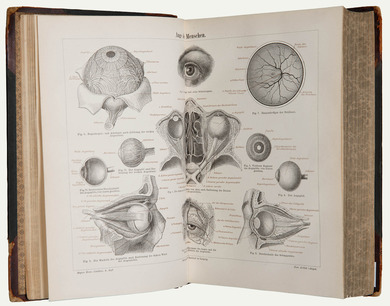Illustration
If one, however, intends to use the current chemical method – in other words using a wet imprint – and one has polished the stone plate with oil of vitriol before one’s drawing and then subsequent etching with nitric acid, one can then, without further ado, make several thousand prints.
Alois Senefelder, Vollständiges Lehrbuch der Steindruckerey, 1818
Illustrations are graphic images accompanying a text. Illustrations can be produced using various graphic techniques (Technology) and reproduced using different printing methods (Printing methods). They take on special signifi cance in scientific text books (Science). Xylography and steel engraving or electroplating make it possible to produce high quantities of copies and thus new types of illustrated journals and newspapers. Techniques like halftone and lithography also make half-tone reproductions possible.
With Alois Senefelder’s invention of a printing process using stone plates (lithography) in 1798 – and the further development and transformation of the process into chromolithography - it became possible to produce mass runs of colour prints.

